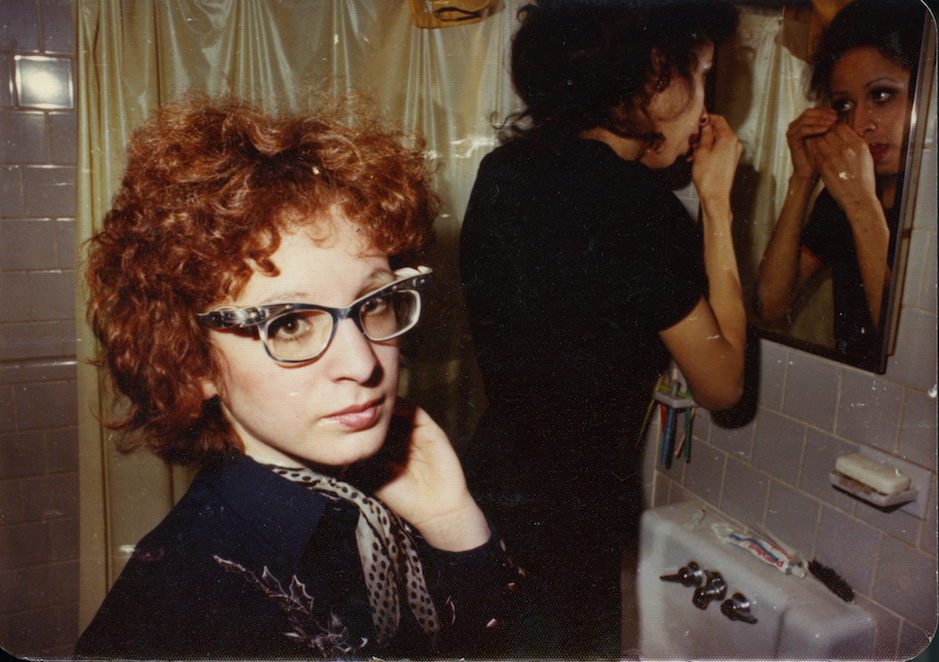Nan in the bathroom with roommate, Boston, 1970s
As nominations pour in for Laura Poitras’ All the Beauty and the Bloodshed, Daisy Woodward speaks to the film’s director about shame, bravery, and Goldin’s life in activism
In the opening scene of All the Beauty and the Bloodshed, Laura Poitras’s new documentary about the life and work of Nan Goldin, we find the feted US artist standing outside The Metropolitan Museum of Art in New York, preparing for protest. It is 2018, and Goldin, dressed in black and recognisable by her signature shock of curly red hair, stands alongside fellow members of her activist organisation P.A.I.N. (Prescription Addiction Intervention Now), which she founded in 2017 in the aftermath of her addiction to the prescription opioid OxyContin. The group is about to stage an action in what was then the museum’s Sackler Wing: throwing faux OxyContin bottles into the area’s central fountain amid cries of “Sacklers lie, people die!”
Once associated with art collecting and philanthropy, the Sackler family is today synonymous with their (now-defunct) pharmaceutical company Purdue Pharma, and the opioid crisis it knowingly spawned via the mass marketing and distribution of OxyContin. The Sacklers’ newfound notoriety is, in no small part, down to the work of Goldin and P.A.I.N., who have proved the David to the family’s Goliath. In the five years since this first action, they have encouraged many of the world’s biggest art institutions to cut all ties with the Sacklers and remove the family’s name from their walls.
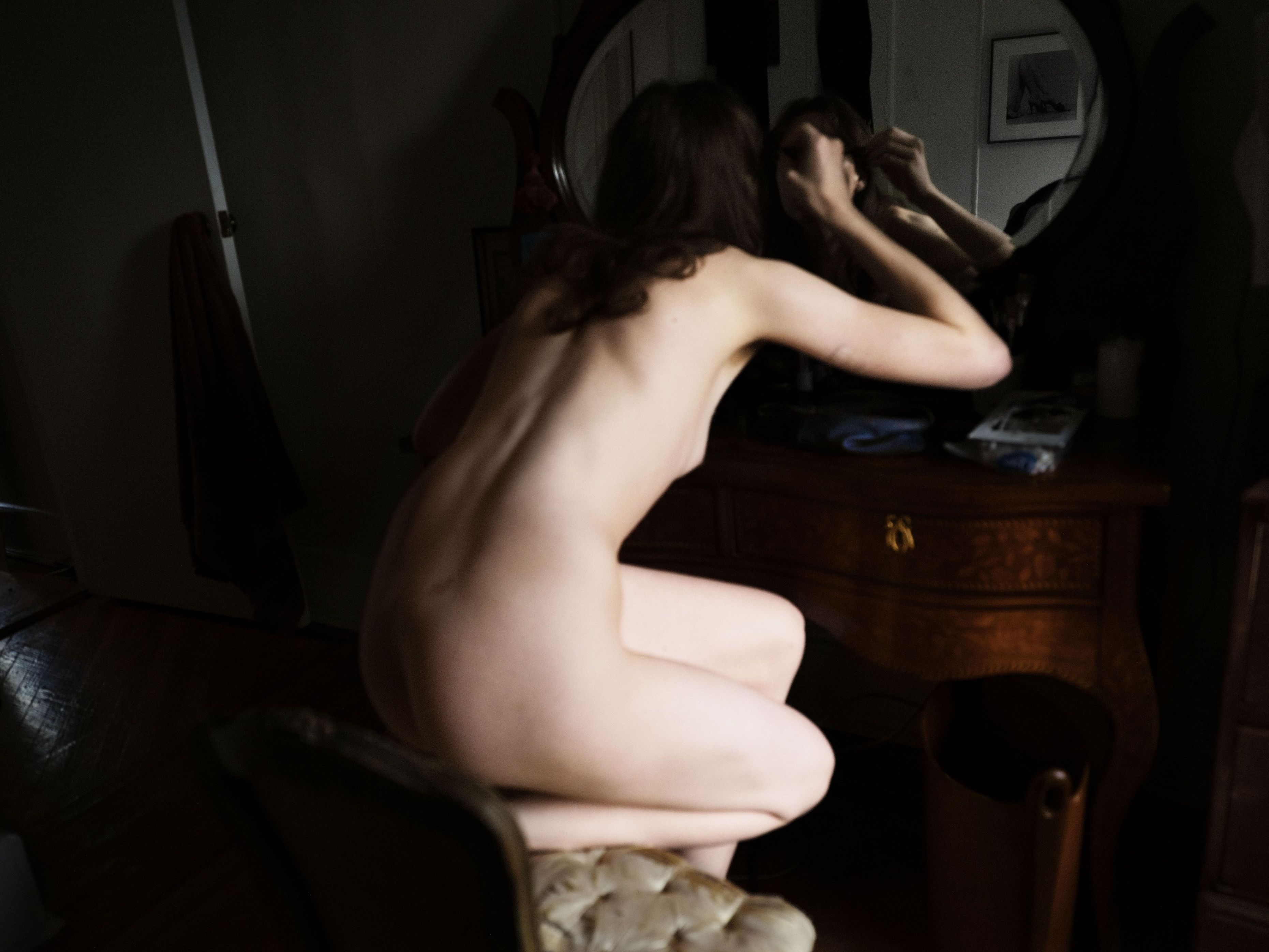
“I didn’t want to do anything that felt like a standard biopic. It’s not comprehensive, it skips vast periods of Nan’s life”
This quest for justice for the victims and families of opioid addiction forms what Poitras describes as “the contemporary through-line” of her Oscar-nominated film, which weaves poetically across the decades to shed light on the activist spirit underscoring so much of Goldin’s life and work.
Poitras takes a deliberately unconventional approach to the story. “I didn’t want to do anything that felt like a standard biopic,” she tells me. “It’s not comprehensive, it skips vast periods of Nan’s life; we were honing down on certain themes.” These topics – grief, family trauma, love, desire and the power of collective action – simmer beneath the surface with the same forceful energy that ripples through Goldin’s images, ever present but never forced.
Born to emotionally ill-equipped parents in “the banality and deadening grip of the Boston suburbs,” it was Goldin’s cherished older sister Barbara who offered her a source of nurture, and later the inspiration to rebel. Barbara was a spirited, artistic soul whose sexual escapades and attraction to other women resulted in her frequent institutionalisation at the hands of her parents (“don’t let the neighbours know” was the Goldins’ mother’s mantra).
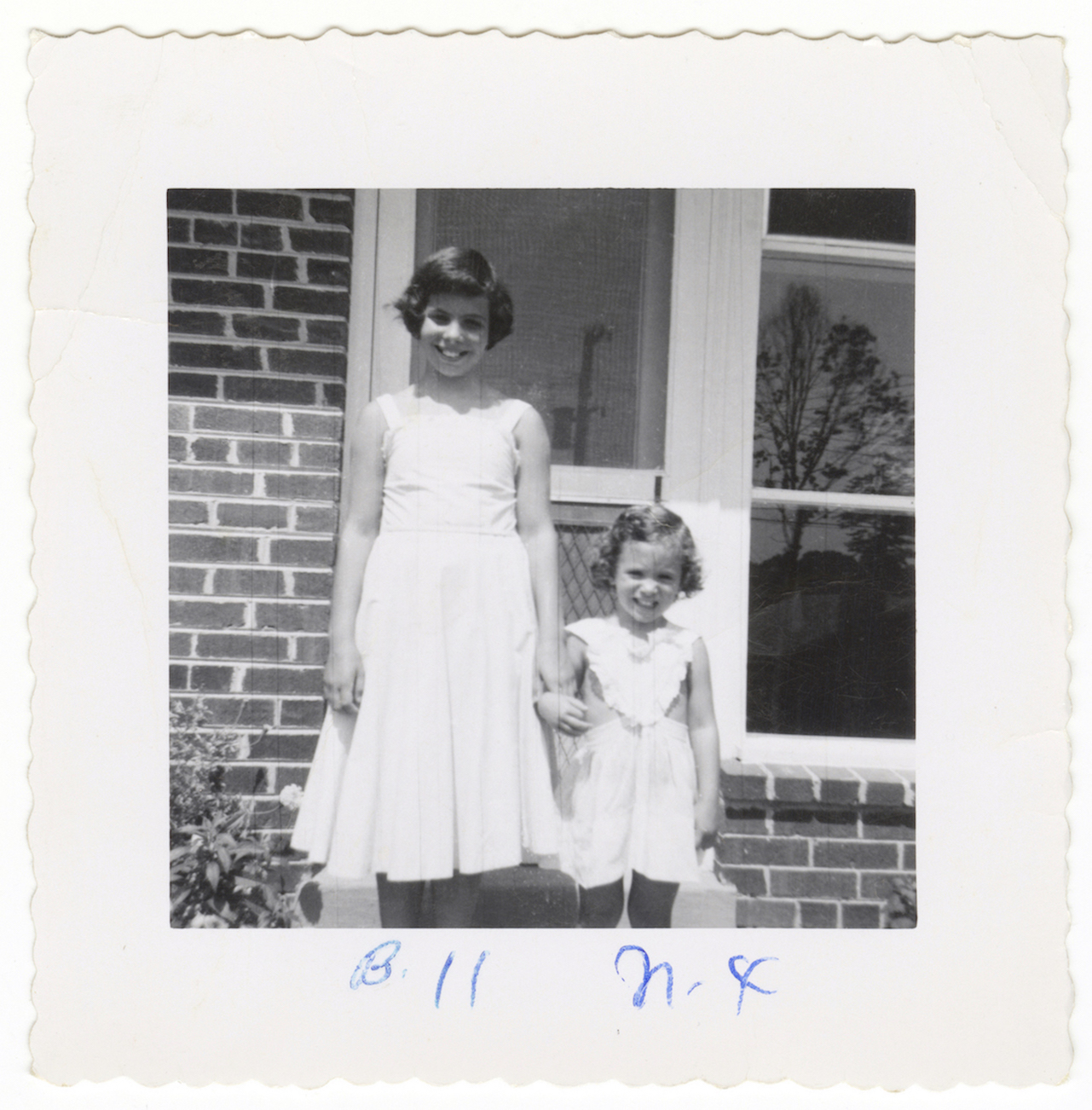
When Goldin was 11 and Barbara 18, Barbara took her own life, sparking in Goldin a fierce rage against the silence, repression and denial of their upbringing. But it was only when she took up photography, at the age of 18, that the photographer began to establish a means of fighting back. As she writes in the afterword of the 2021 edition of her celebrated photobook The Ballad of Sexual Dependency (1986): “I saw very early that my experience could be negated. That I never said that, I never did that, that never happened… I wanted to make a record of my life that nobody could revise.”
By this point, Goldin had also embraced “a complete rejection of the norms of society,” Poitras tells me. “Not only as [means of] a political protest but as a full-stop, not-interested opting out.” And from her teenage years onwards, she gravitated towards others equally invested in defying conventional expectations – drag queens, dissolute artists and the like – to formative effect.
“The artist David Wojnarowicz [who features heavily in the film in late-1980s archive footage] writes a lot about the pre-invented existence, the social structures we’re born into,” Poitras explains. Both Wojnarowicz’s and Goldin’s work takes a proactive stance against this conformity. “It’s: ‘We reject this and are going to do something different,’” Poitras continues. These values have defined Goldin’s work ever since.
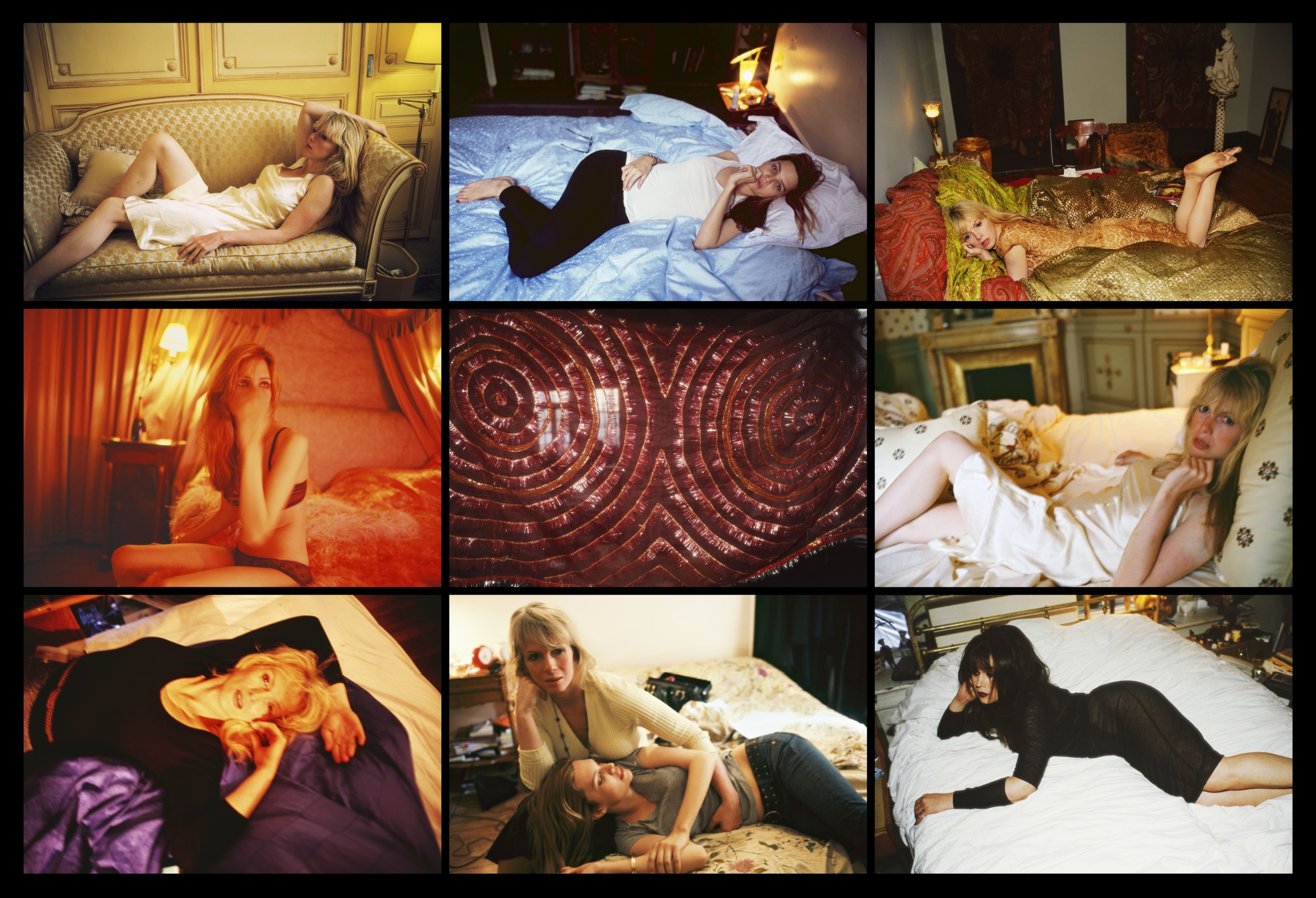
Poitras uses The Ballad of Sexual Dependency, and other early works featured in Goldin’s famous live slideshows to offer an unflinching, intimate look into the lives that the artist and her friends led, first in Provincetown, Massachusetts, and then in Lower Manhattan. The desire to let the images speak for themselves is a common curatorial decision with Goldin’s work. A small-scale presentation of Goldin’s photography at the Akademie der Kunst, Berlin, features a captionless, non-chronological display of photographs from Boston, New York, Berlin, London, Manila and Bangkok between 1972–2020. In the cinema and gallery, the curtain is lifted on youthful, queer rebellion – the sex, the drugs, the dressing up, the hanging out. The film’s sequences mirror the slideshows’ format, set to rousing music (as per the original displays), and hammering home the indelible connection between Goldin’s life and art.
In these early days, Goldin’s motives weren’t overtly political, but at a time when trans people could, in Goldin’s words, “get arrested walking down the street in Boston,” her subjects, and the images themselves, were a form of protest by virtue of their mere existence. The same applies to Nan After Being Battered, a 1984 self-portrait in which Goldin stares directly at the camera, her bloodshot eyes circled by deep purple bruises, after a brutal attack by her former partner. Since publishing this and similar photographs, Goldin says, many domestic abuse victims have approached her to express how these works have helped them speak out about their own experiences – and that was her ultimate hope.
“Nan really puts so much of herself in the work,” Poitras says. “I could sense how painful it was to return to some of these photographs and stories, but there’s this desire to destigmatise. It’s not that she enjoys revealing these parts of her life, but that [she knows] there’s a way it can reach people.”
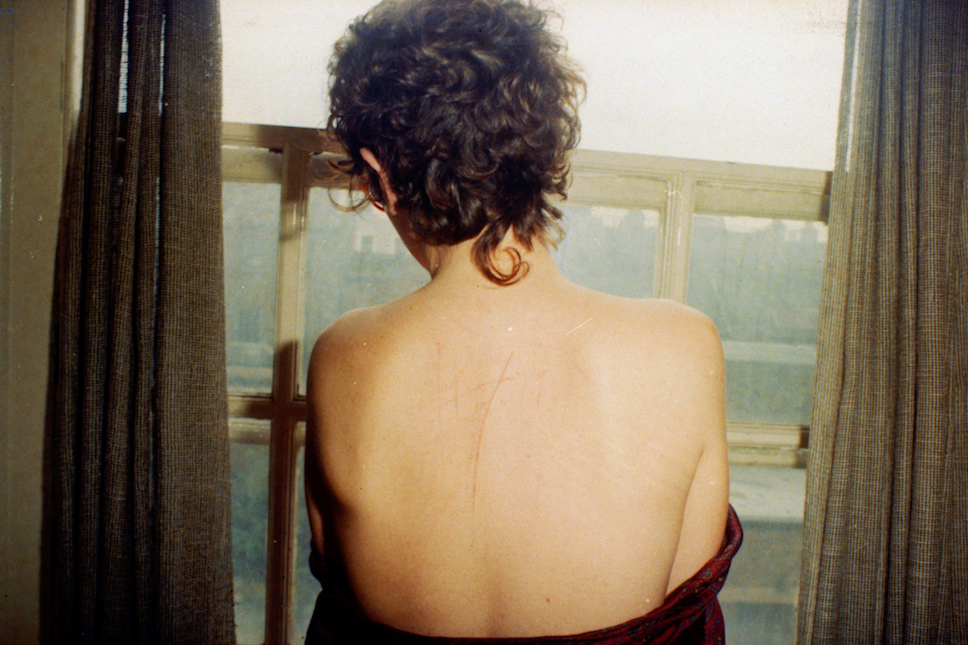
Goldin also used curation as a means to hold up a mirror to the world around her. Witnesses: Against Our Vanishing, a 1989 group show at New York’s Artists Space, tackled the subject of AIDS head on, featuring the work of many artists living with the virus, from Peter Hujar to Cookie Mueller, and garnered vast publicity.
“The exhibition was so powerful because it celebrated sexuality – it didn’t victimise,” says Poitras. “And Nan did that right in the midst of the culture wars: [Robert] Mapplethorpe’s show [The Perfect Moment at Corcoran Gallery of Art] had been banned, and here you have Nan putting on a very sexually explicit show that marks the lives of people who were dying.” Ultimately, the show’s funding was withdrawn, but not before its message had been stressed far beyond the New York City underground.
“Nan really puts so much of herself in the work. I could sense how painful it was to return to some of these photographs and stories, but there’s this desire to destigmatise”
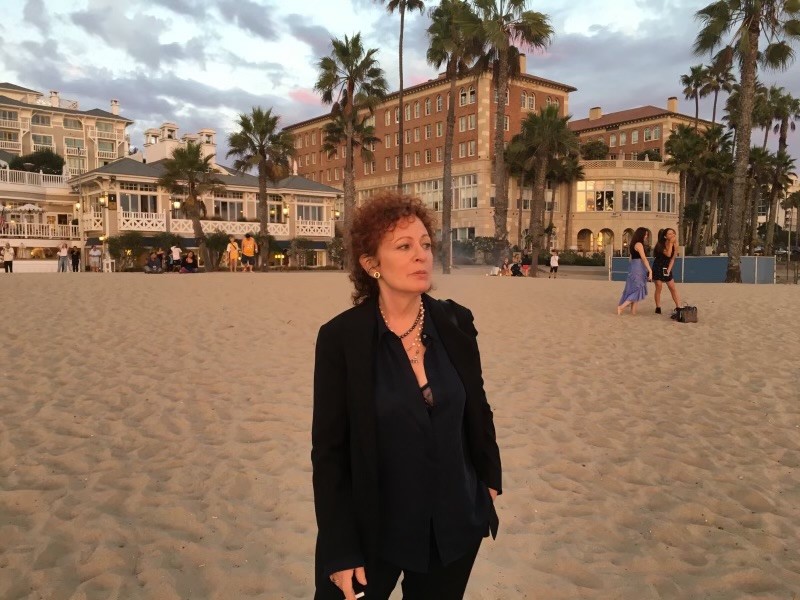
All the Beauty and the Bloodshed draws deliberate parallels between Goldin’s actions during the AIDS crisis and the activist stance she has taken in response to the opioid epidemic (P.A.I.N. used the ACT UP activists’ actions as inspiration for their own die-ins and protests like the dissemination of fake prescription slips from the top of the Guggenheim Museum’s central rotunda in 2019).
The battle continues: her latest aim is to destigmatise sex work, an industry she herself has worked in but hadn’t spoken about publicly until the making of the film. “Nan asks us to think about where we put shame in society,” Poitras concludes. “Shame belongs on the profiteers, the people who are benefiting off other people’s suffering, not on those who are suffering – and that’s a key thing that drives Nan’s work. I’ve known a lot of brave people who have taken a lot of risks, but in terms of emotional bravery, I’ve never seen anyone braver than Nan.”
Laura Poitras’ All the Beauty and the Bloodshed is out now
Nan Goldin is the winner of the Käthe Kollwitz Prize 2022. An exhibition of her photographs is at the Akademie der Künste, Berlin, until 19 March

